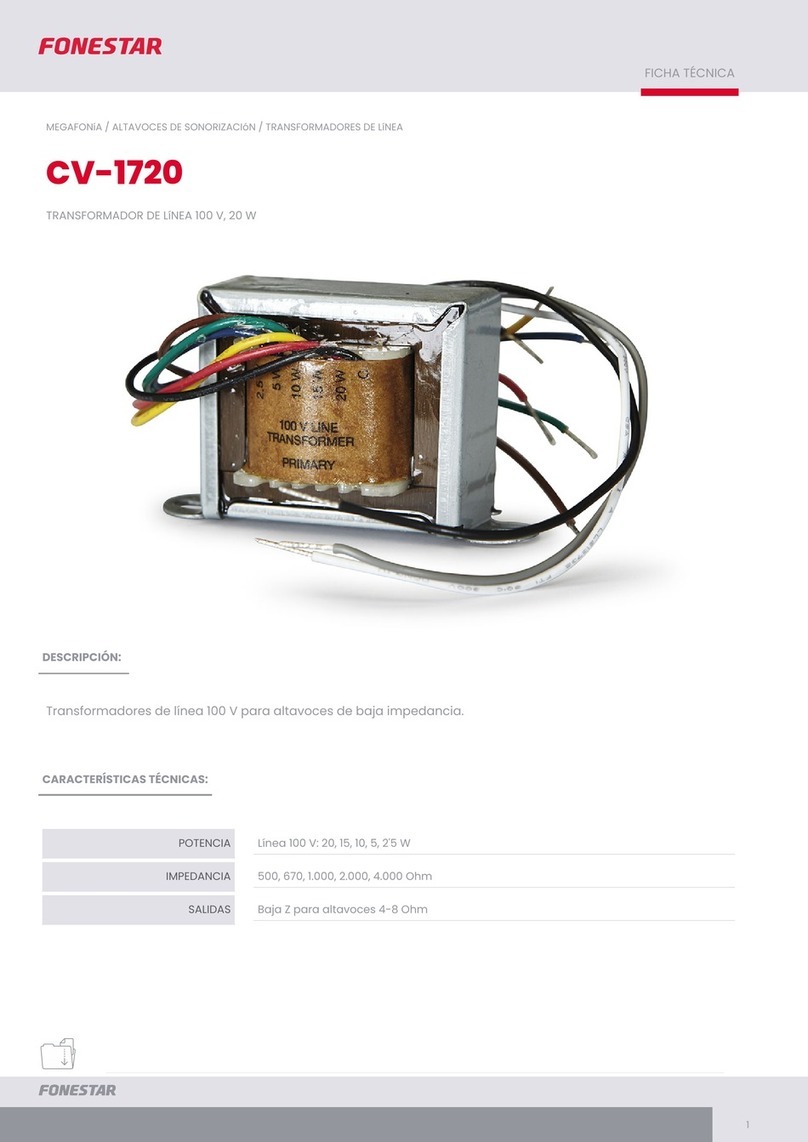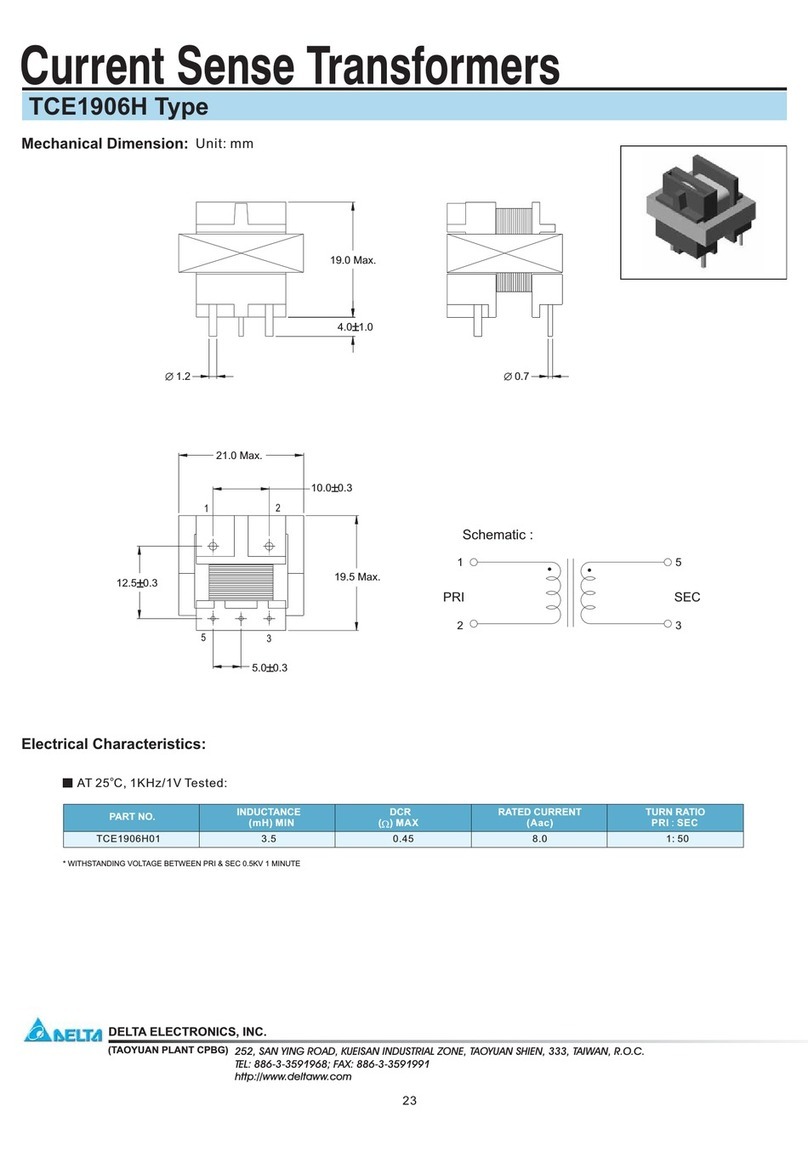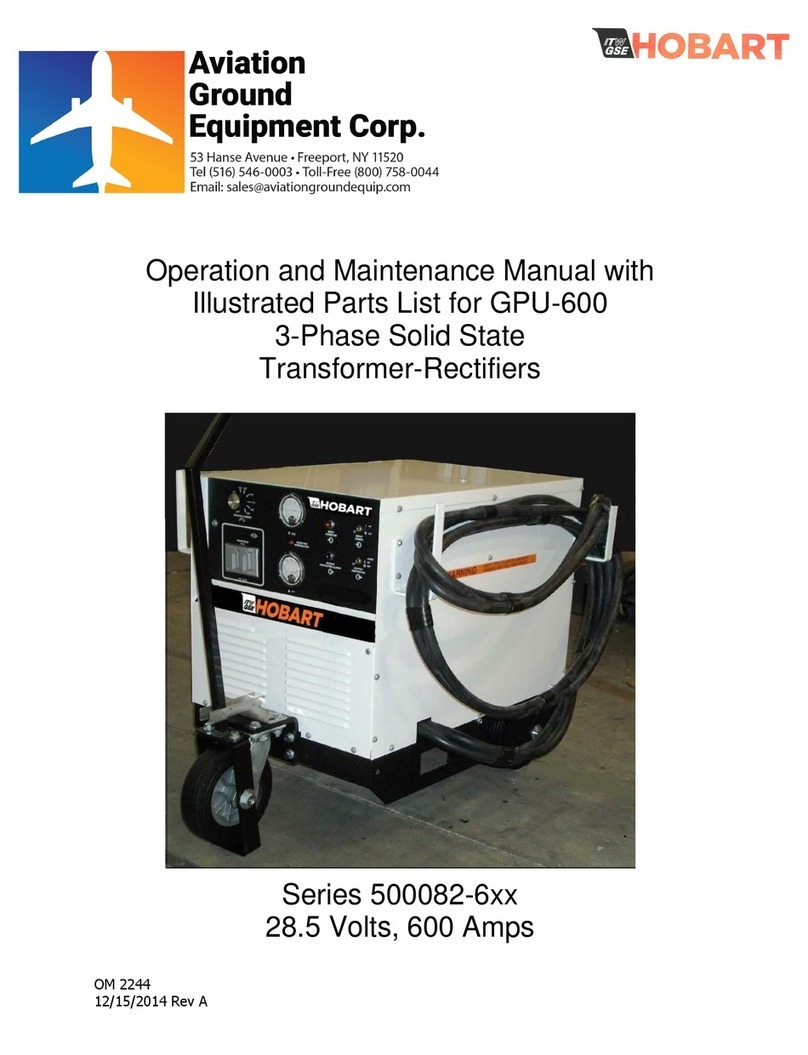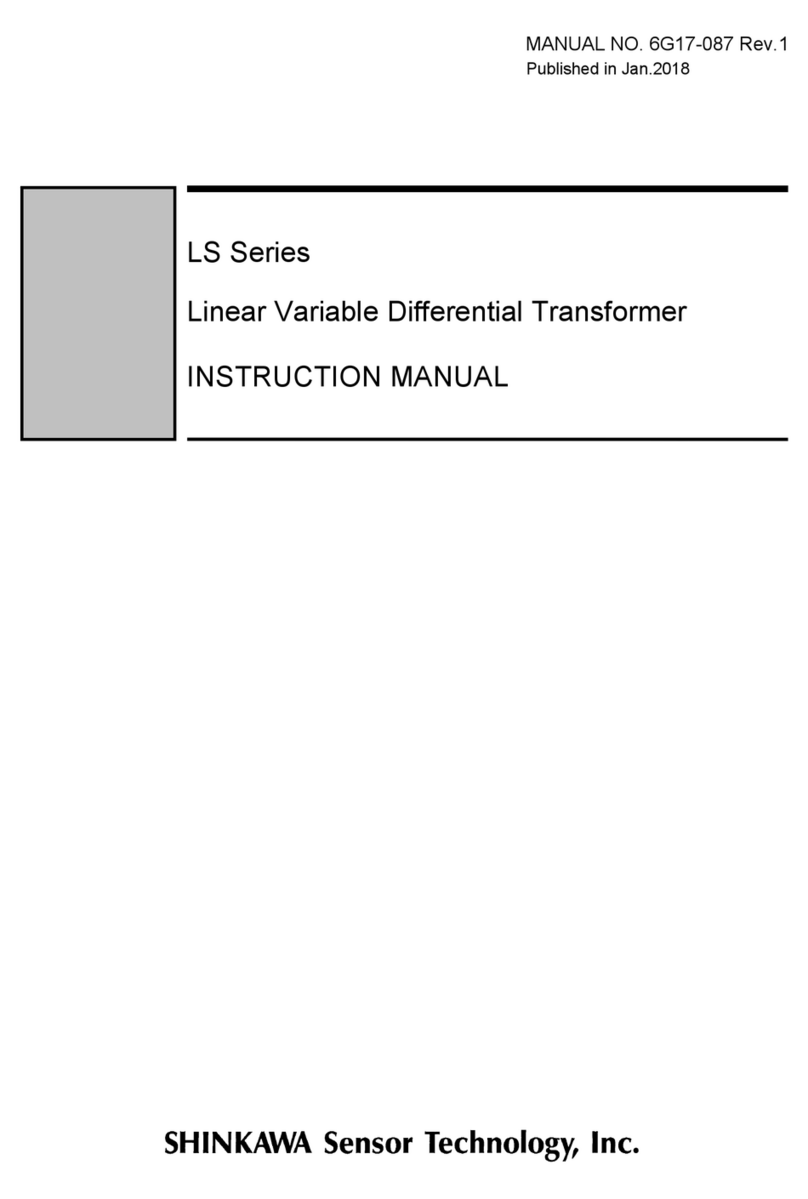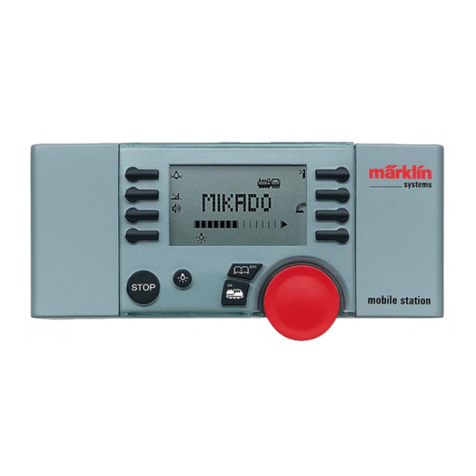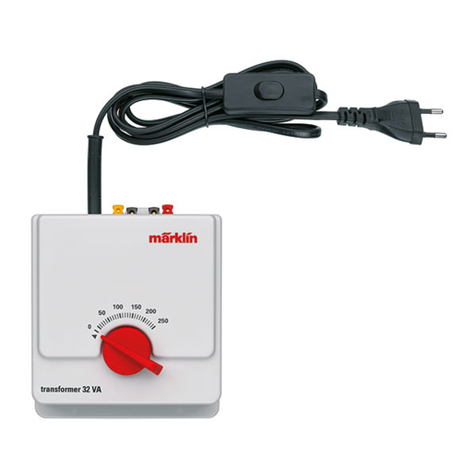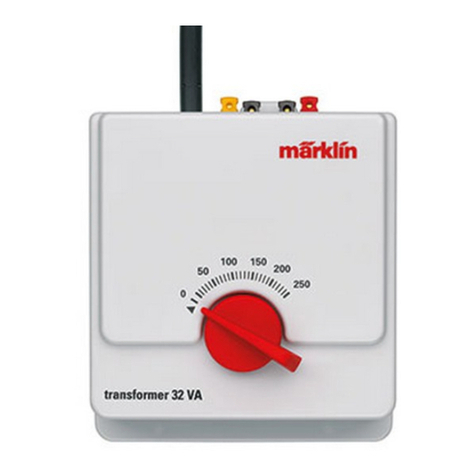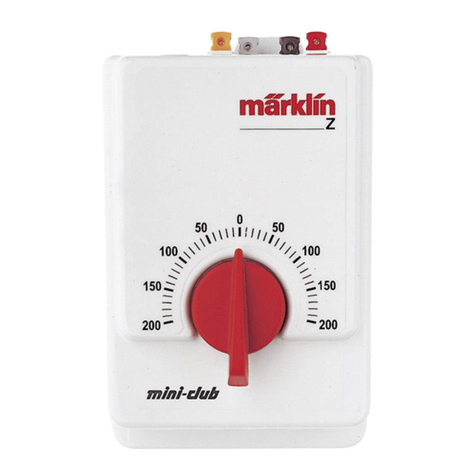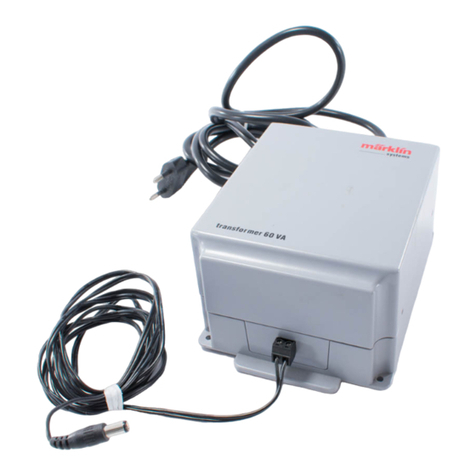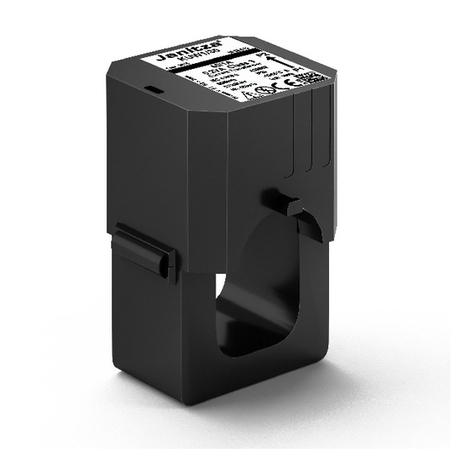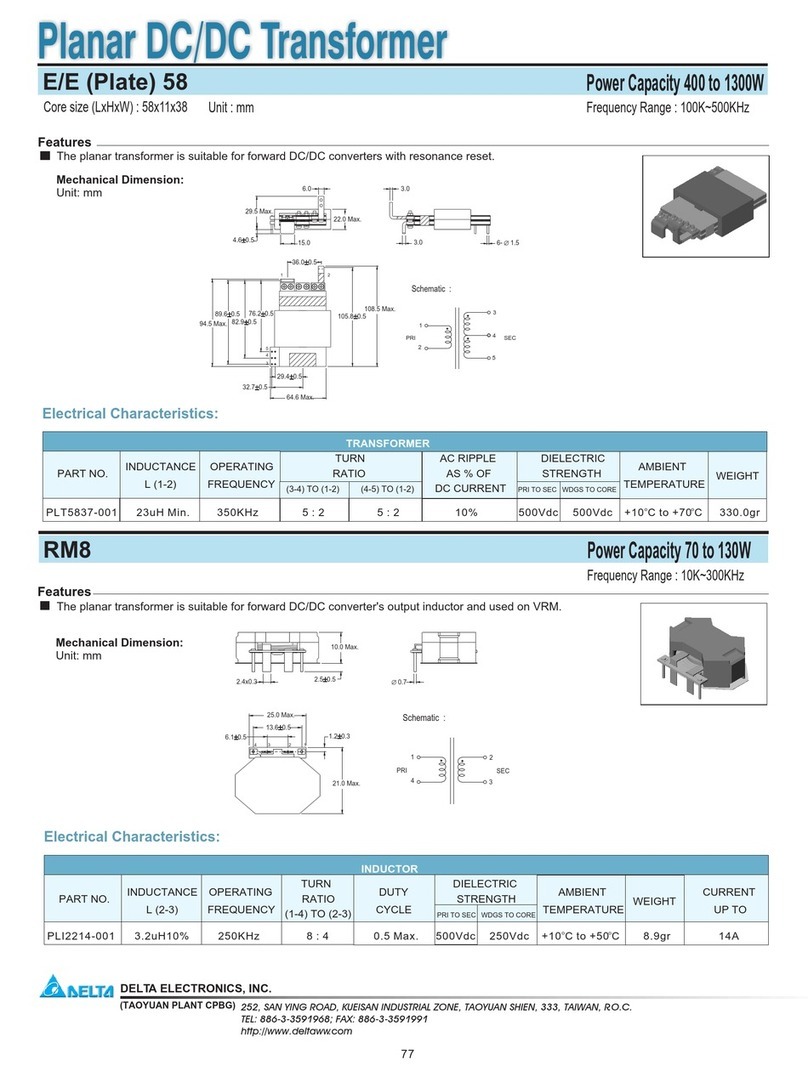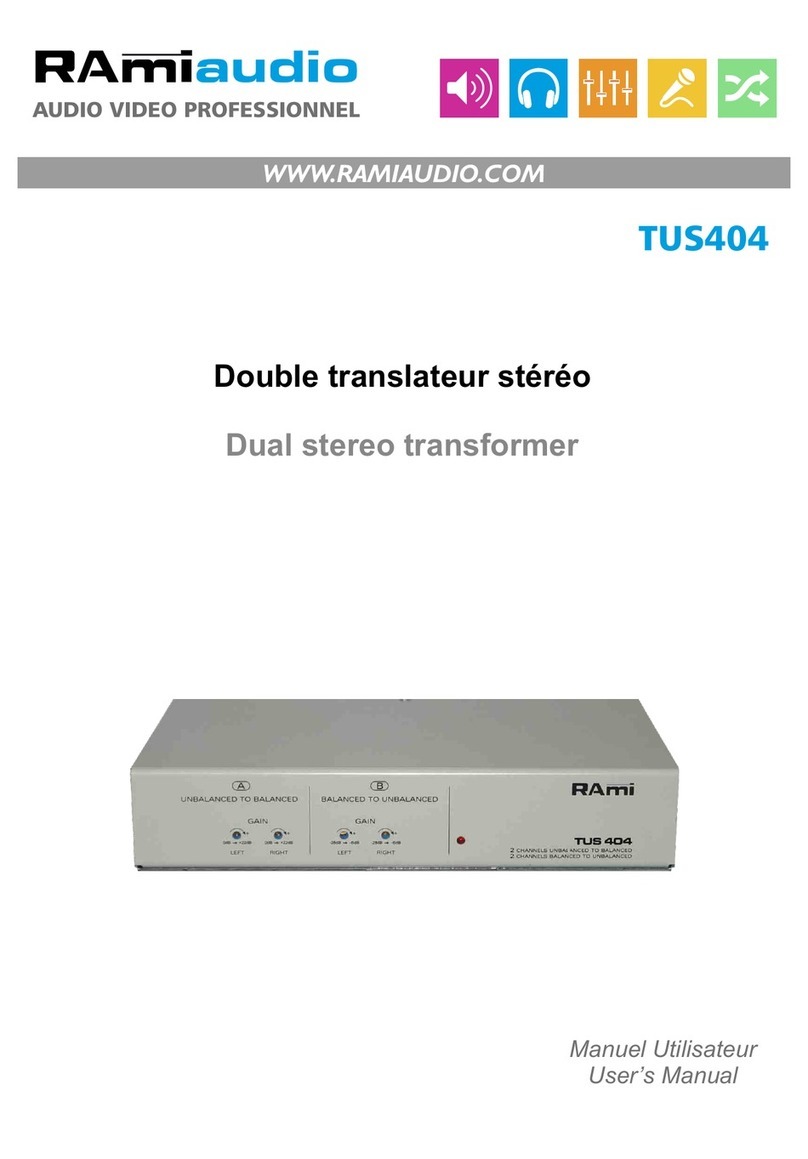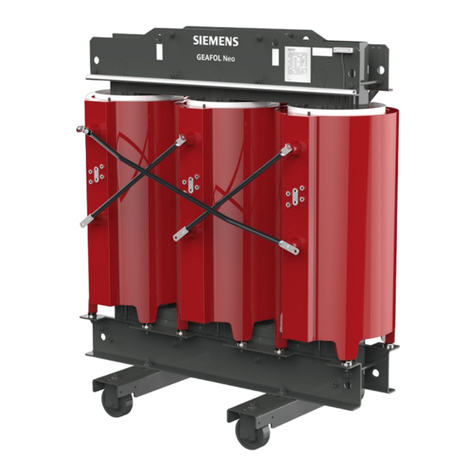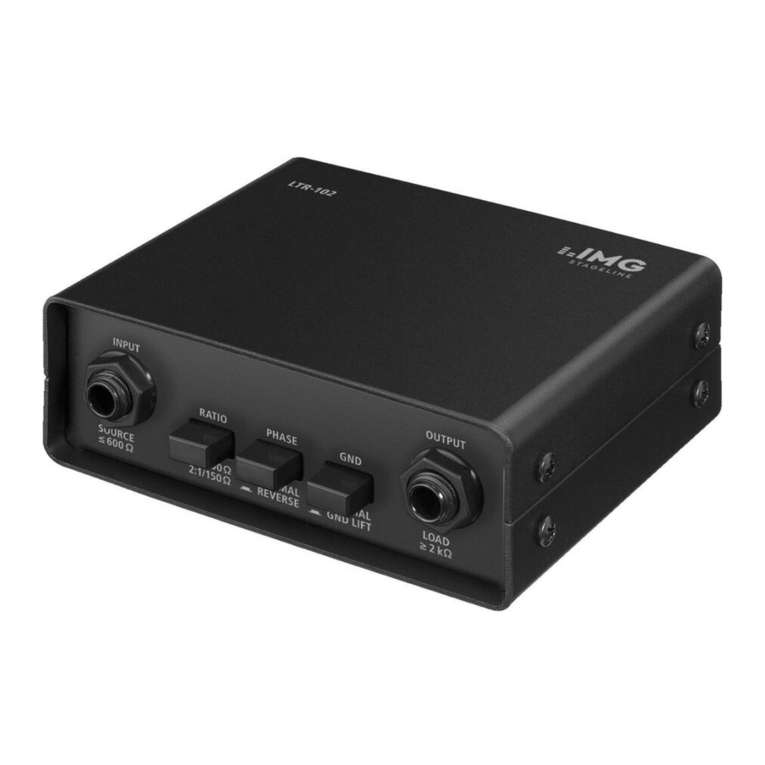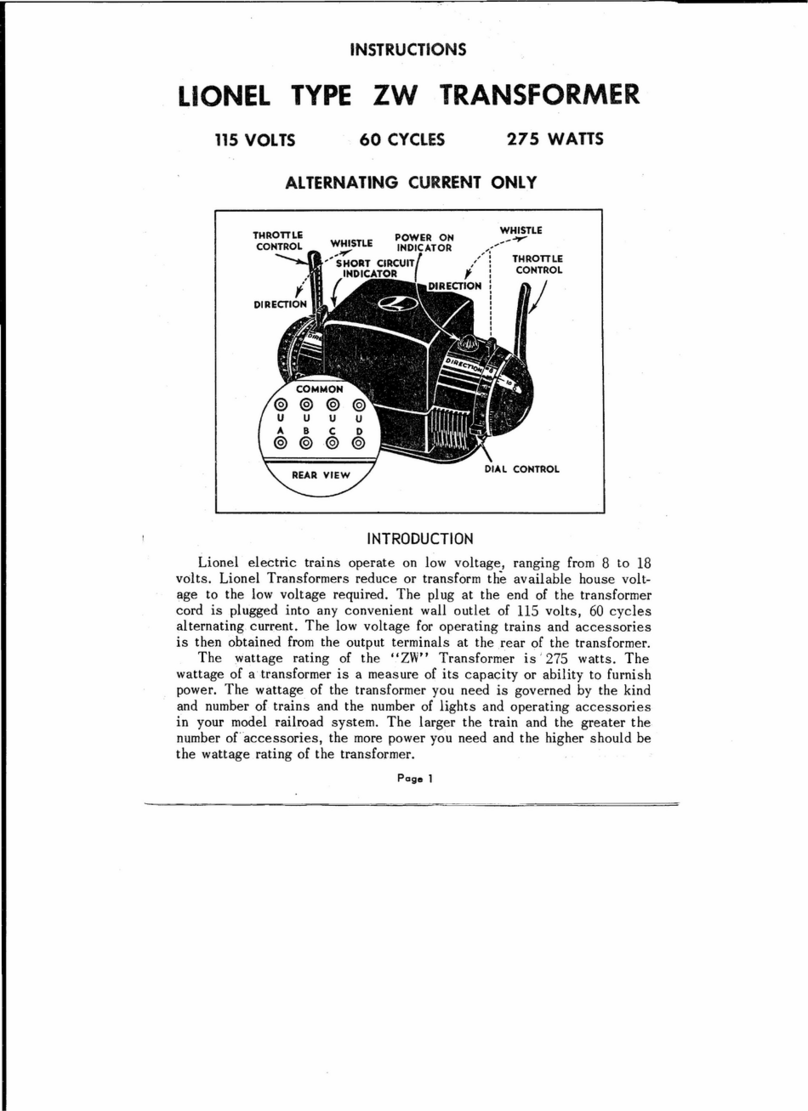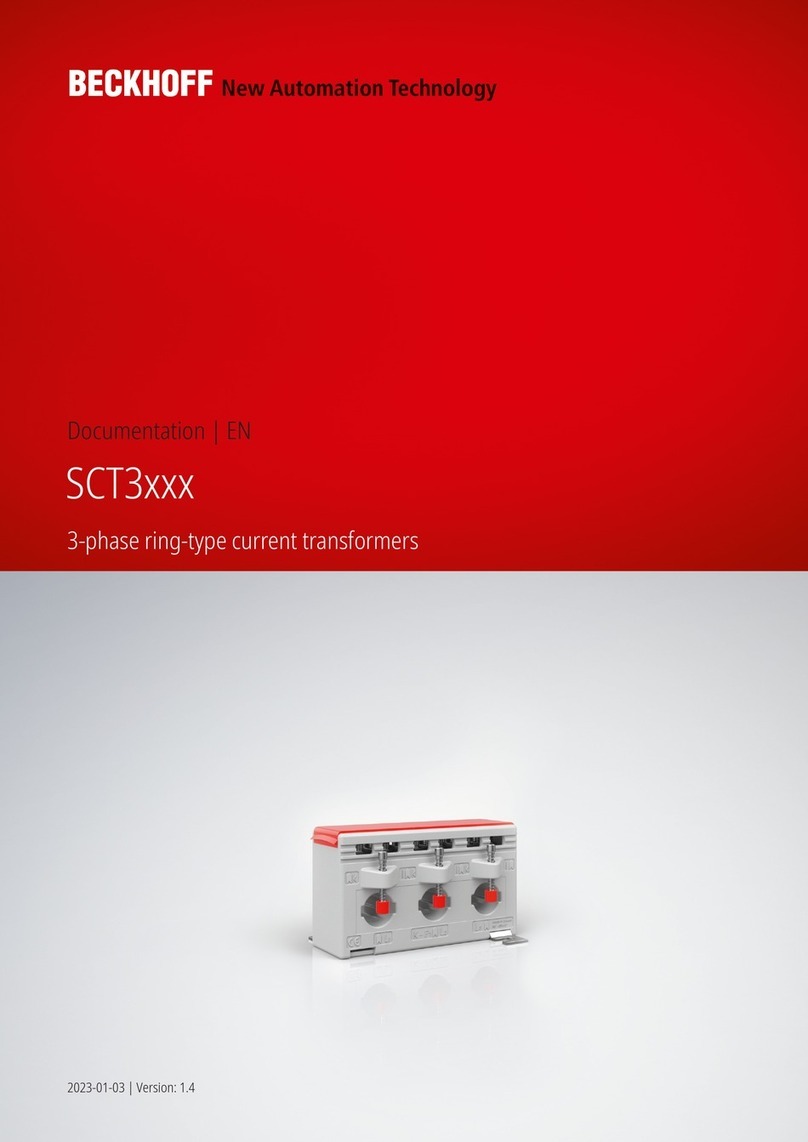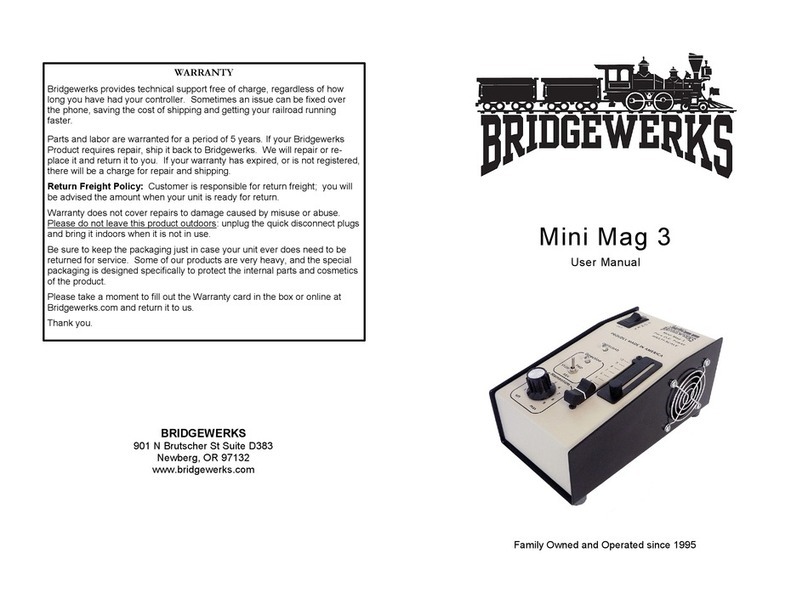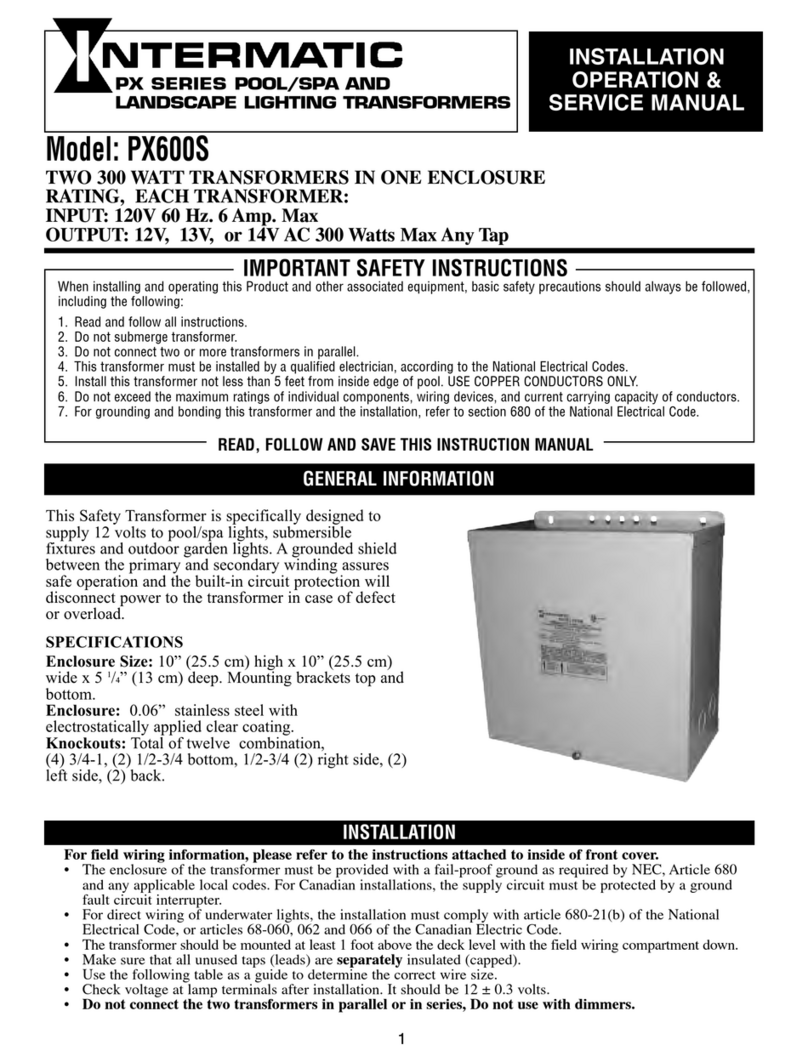5
• Beim Transport des Transformators darf dieser nie
an der Netzleitung gehalten werden.
Transformator vor dem Transport abkühlen lassen,
wenn er in Betrieb war.
• Überprüfen Sie regelmäßig den Zustand der
Netzleitung sowie das Transformatorgehäuse auf
Beschädigungen. Diese optische Überprüfung darf
nur durchgeführt werden, wenn die Netzstecker
aller im Einsatz befindlichen Transformatoren aus
den Steckdosen des Haushaltsnetzes entfernt sind.
Beim geringsten Verdacht einer Beschädigung
darf der Transformator erst nach einer gründlichen
Überprüfung und Reparatur durch einen Fachbetrieb
(z. B. Märklin Reparatur-Service) wieder verwendet
werden. Die Netzleitung der Transformatoren darf
nicht ersetzt werden. Sorgen Sie in diesem Fall für
eine fachgerechte Entsorgung oder senden Sie den
Transformator zum Umtausch an den Märklin Repa-
ratur-Service.
• Das fest angebaute Anschlusskabel vom Transfor-
mator zum Controler darf nicht verändert werden.
Die Verwendung eines Verlängerungskabels oder
einer Stromverteilung ist nicht gestattet.
Liebe Eltern,
Transformatoren für Spielzeuge sind nicht dazu geeig-
net, als Spielzeuge benutzt zu werden. Die Benutzung
muss unter ständiger Überwachung der Eltern erfolgen.
Weisen Sie Ihre Kinder unbedingt darauf hin den,
Transformator nur entsprechend seiner Bestimmung
als Bediengerät zu verwenden. Während des Spielbe-
triebes darf der Transformator nicht bewegt werden. Im
ausgeschalteten Zustand nie den Transformator durch
Halten an der Netzanschluss-Leitung transportieren.
Weisen Sie Ihre Kinder unbedingt auf die Gefahren des
Haushaltsnetzes hin.
Überprüfen Sie optisch in regelmäßigen Abständen
(je nach Häufigkeit des Spielbetriebes) bis zu 1 x pro
Woche den Transformator und seine Anschlussleitun-
gen im abgeschalteten und total vom Netz getrennten
Zustand auf Beschädigung. Beim geringsten Verdacht
einer Beschädigung darf der Transformator erst nach
der Reparatur durch den Märklin Reparatur-Service
weiterverwendet werden.
Weisen Sie Kinder unbedingt darauf hin, dass Ver-
änderungen an der Verkabelung nie ohne Aufsicht
durchgeführt werden dürfen.

